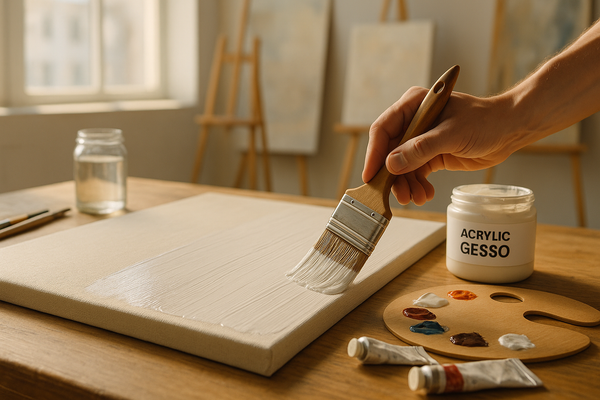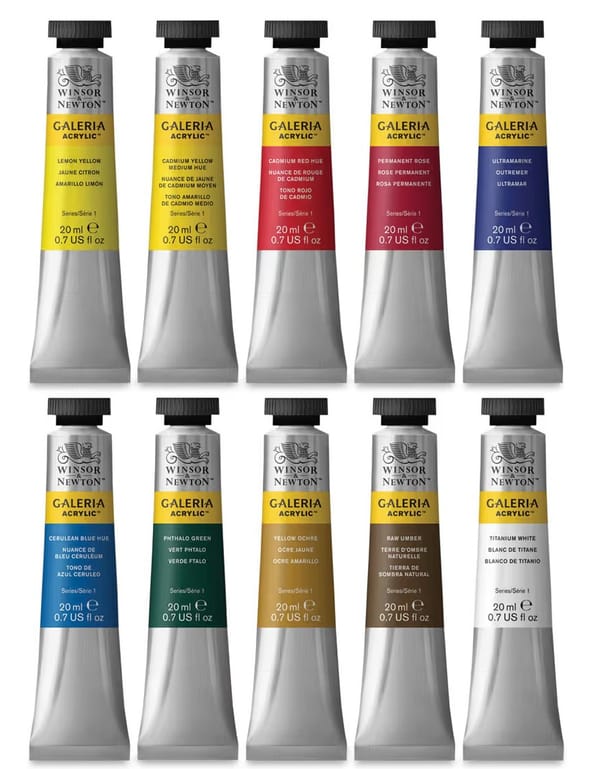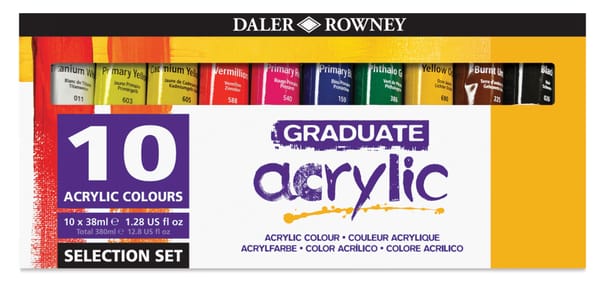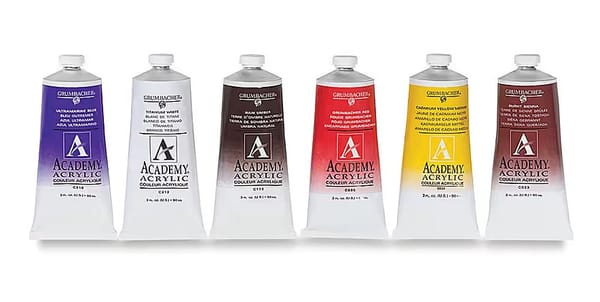Why Serious Artists Prefer Linen Canvas?
Find out why serious artists choose linen canvas over other surfaces. Explore the benefits of durability, texture, and professional results that linen offers.

Have you ever noticed how seasoned painters talk about linen canvas with so much enthusiasm? You might hear people say it’s the “gold standard” of painting surfaces. If you’re curious about why it gets so much praise, you’re in the right place. In this blog, you will learn the main reasons why serious artists prefer linen canvas over other options.
What Makes Linen So Special?
Before discussing the specifics, let’s discuss linen's essential nature. Linen canvas comes from the fibres of the flax plant. It has a long history, dating back centuries. Over time, people discovered that flax fibres create a sturdy and reliable fabric. Many compare its durability to that of a well-built house—it can withstand daily wear and tear and hold its shape in all sorts of conditions.
So, why does that matter for you as a painter? When you work with linen canvas, you’re working on a surface that’s less likely to sag or warp. The fabric’s weave is also distinct, offering a unique texture that many artists adore. Linen fibres are strong yet flexible. When you apply paint, you’ll notice a consistent response. This makes your brushstrokes come out the way you intend instead of fighting the canvas.
A Quick Look at Linen vs Cotton
You might already know about cotton canvas, which is also popular among artists. Cotton is often cheaper, and many beginners start there. But as you progress, you may want to move on to linen. Here’s a short table to highlight their core differences:
Feature | Cotton Canvas | Linen Canvas |
|---|---|---|
Fiber Origin | Cotton plant | Flax plant (linen) |
Durability Over Time | Good (can stretch or sag eventually) | Excellent (holds the tension for many years) |
Texture | Often smoother, it can feel springy | Firmer, with a natural weave |
Price Range | Typically lower cost | Often more expensive |
Common Uses | Hobby projects, studies, quick art | Professional pieces, long-term works |
This table gives you a snapshot. Of course, you can make beautiful art on cotton, but linen offers that extra sense of reliability and finesse that many serious painters crave.
The Durability Factor
One of the top reasons experts favour linen is its impressive durability. If you’ve ever had a canvas lose tension in the corners or develop small tears from regular handling, you know how frustrating that can be. Linen is less prone to these issues because its fibres are more rigid.
A well-prepared linen canvas can also handle changes in humidity or temperature better than many other surfaces. This means you’re less likely to see your artwork warp or buckle in a hot, humid room. In the long run, that stability saves you time, money, and stress. You won’t be constantly re-stretching or worrying about small cracks appearing in your paint layers.
It’s like buying quality furniture. You pay a bit more upfront, but you won’t have to replace it anytime soon. Serious artists recognise this value because they want their pieces to last for decades—or even centuries, especially if they sell their artwork or display it in galleries.
The Weave and Texture Advantage
Linen has a unique texture that other fabrics can’t fully duplicate. If you look closely at a linen canvas, you’ll see a slight irregularity in the weave. This irregularity adds visual interest to the final painting, even if some parts of the fabric get covered by thick paint. Many artists feel that this subtle texture contributes to a piece’s overall charm.
You’ll also notice how linen interacts with different types of paint. Oil painters, for example, often appreciate the way linen holds paint layers in place. Acrylic painters also find that their colours adhere nicely, creating a solid bond with the primed surface. That bond helps the painting maintain its vibrancy over time.
In short, linen’s weave offers both strength and a pleasant visual quality. If you enjoy seeing a bit of the canvas texture come through, linen can be an exciting surface.
The Painting Experience
Ever tried painting on a low-quality canvas that felt spongy or unsteady? It’s not very enjoyable. In contrast, linen typically feels taut and ready for action. Each brushstroke can glide across the surface more consistently. That consistency allows you to focus on your creative expression rather than wrestling with the canvas.

Because linen stays tight on the frame, you’ll often find that your paint layers dry uniformly. This can be a game-changer if you’re someone who likes to work in thin layers or uses glazing techniques. When the surface remains stable, your paint films form smoothly. You won’t see weird dips or sagging in certain spots.
This reliable foundation boosts your confidence as you paint. Think of it as having a good set of tools in your toolbox—you can work faster and more precisely, knowing the canvas won’t surprise you.
The Cost Consideration
There’s no sugarcoating the fact that linen canvases are usually more expensive than cotton. This often makes newcomers wonder if it’s really worth it. The short answer is it depends on your goals. If you paint once in a while as a relaxing pastime, cotton might be excellent. However, if you aim to sell or exhibit your work, linen can elevate the perceived quality of your art.
Like investing in high-grade art supplies, such as professional paint or durable brushes, paying a bit more for linen can pay off in the long run. Serious artists often consider it an essential cost for a stable and long-lasting painting.
To help you weigh the investment, here’s another table:
Factor | Cotton Canvas | Linen Canvas |
|---|---|---|
Upfront Price | Lower | Higher |
Long-Term Maintenance | May need re-stretching or frequent care | More stable over time, fewer replacements |
Artwork Value Perception | Viewers don’t usually associate cotton with “premium.” | Often linked with professional, gallery-quality pieces |
Ideal For | Quick projects, studies, beginner practice | Fine art, commissions, long-term displays |
If you find yourself torn between saving money or choosing the better surface, consider the purpose behind each painting. For smaller studies or quick sketches, a budget canvas might be acceptable. However, for essential or large-scale pieces, linen can be the way to go.
Prep Work Matters
Just because linen is a top-tier fabric doesn’t mean you can skip essential prep steps. In fact, linen often requires a bit of extra care before you start painting. You might need to size it (with something like rabbit skin glue or an acrylic polymer) and apply a few coats of gesso. That process seals the fibres and stops the paint from sinking into the fabric.
This prep work creates a stable surface that holds colour well. If you take the time to do it properly, you’ll notice a difference in how your brush feels, how your paint dries, and how the final artwork looks. It’s similar to building a solid foundation before constructing a house. If you skip it, problems might arise down the road.
Some people find the preparing stage a bit tedious, but once you get the hang of it, it becomes part of your routine. It’s also kind of relaxing—like a ritual that gets your mind ready to create.
A Brief Word on Longevity
Serious artists often think about how their work will look many years from now. If you’ve spent days, weeks, or even months on a painting, you probably don’t want it to deteriorate quickly. Linen’s natural strength supports the longevity of your piece. Museums around the world preserve centuries-old paintings on linen canvases, which shows how well they can hold up.
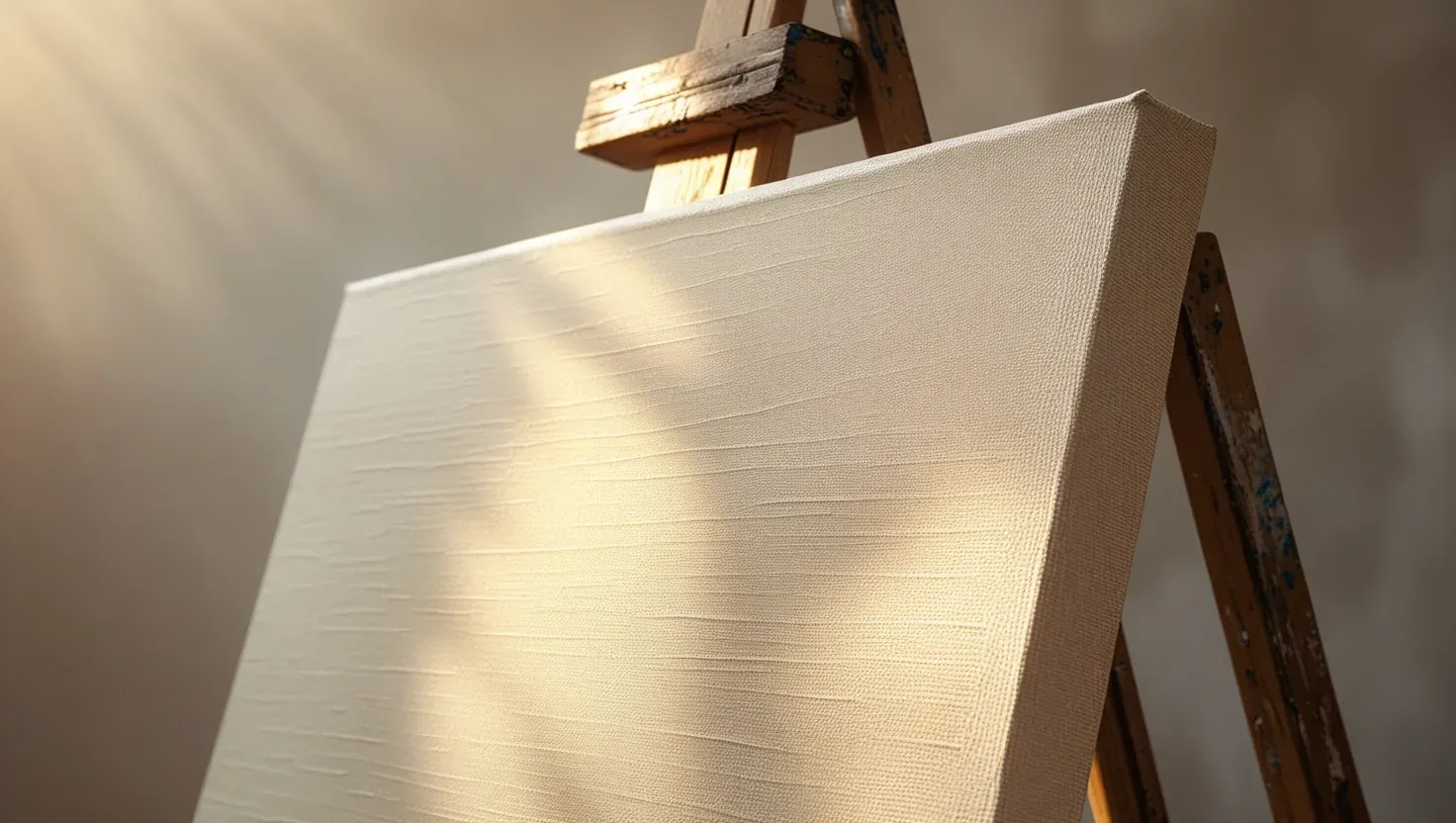
Of course, the paint and varnish you use also matter, but the canvas is a key player. If you use a stable fabric that doesn’t shift or degrade quickly, your painting has a better shot at standing the test of time. Collectors and galleries notice that factor, too. They often regard linen canvases as a sign of professional craftsmanship.
Does Linen Suit All Styles?
You might wonder if linen is only for realism or traditional styles. It works for a wide variety of techniques and genres. Abstract painters use it for its resilient nature. Portrait artists appreciate its fine weave. Landscape painters love that it can handle thick layers of paint and delicate glazes. Even mixed-media artists sometimes choose linen for a sturdy base that can hold collage materials or heavier mediums.
That said, linen might not be necessary if you’re just learning the basics of colour mixing or brush control. But once you grasp fundamental skills, you might want to give linen a try to see how it changes your experience.
Where to Buy?
You can choose Blick Art Materials, as they regularly updates its catalog to show new trends and product improvements in the art industry. This means you’ll often see fresh arrivals of linen canvases with different weaving patterns and priming techniques.
Rather than limiting yourself to one or two brand choices, you’ll discover a wide selection in various price ranges. That’s great news if you plan to experiment, since you can try a cost-effective canvas first and then upgrade to a more premium linen if you like the results. With each product listing, you’ll also find key information about the stretcher bars, priming layers, and recommended paint applications.
Final Thoughts
Linen is superior due to its durability, texture, and overall painting experience. At the same time, it might seem like a big step (mainly if you’re used to cheaper alternatives), but many find that once they try linen, they don’t want to go back.
It feels good to work on a surface that supports your creativity without causing issues down the line. Whether you’re an experienced painter or you’re simply exploring new options, linen is worth a look. You might discover that it opens doors to new techniques or a richer connection with your art. At the very least, you’ll understand the excitement that surrounds this premium fabric.

